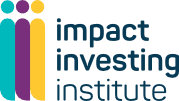
City Bridge Foundation (formerly known as Bridge House Estates) was established over 900 years ago and now manages and maintains five of London’s bridges across the river Thames. It is the UK capital’s biggest independent charity funder, providing financial, philanthropic and non-financial support to London’s communities, aiming to tackling inequality and disadvantage with a vision to see ‘every person in London becoming truly connected’.
Karen Atkinson, Finance Director and Julia Megone, Charities Technical and Strategic Finance Manager explain the initial steps for adopting an impact-focused investment approach.
First, how is the endowment of the City Bridge Foundation structured?
Karen: As of March 2023, the total value of the charity was about £1.6 billion. Just under £1 billion is the permanent endowment and the remaining £600,000 in unrestricted income funds. Within the endowment, about 86% is investment properties, of which around half are properties held as ground leases and the rest are directly-managed properties. The remaining 14% is held with investment managers, to generate an income stream.
Under our legal powers, any returns the endowment generates are there primarily to maintain and support the five London bridges both now and also into the future, including any future replacement. However, since 1995 our powers have been widened so any surplus in any given year can be directed to our ancillary object of grant-making. Currently we distribute around £30 million a year in grants towards charitable causes across Greater London. We have also made a further £200 million available over the five years to 2026 to support the capital’s charity sector.
What was the catalyst for thinking about investing the endowment with an impact lens?
Karen: It has been quite a gradual process. Our corporate trustee, the City of London Corporation, has had a responsible procurement and business lead for quite a number of years. Then in 2020, they adopted a climate action strategy and we subsequently adopted it as well.
Another catalyst was some major governance changes that mean that we now have our own board, the City Bridge Foundation Board. That has enabled us to focus on thinking about what we could do differently and what best suits our objectives, especially as we don’t have some of the constraints that the rest of the Corporation has. That culminated in November 2021 in the publication of our 25-year strategy, Bridging London, providing a framework for all our activities and outlining the collective impact we seek to have, focusing on a values-led approach of aiming to be catalytic, sustainable and impact driven. This strategy was recently refreshed to highlight equity, diversity, and inclusion (EDI) and climate action as the two cross-cutting strategic ambitions for the charity, meaning we see them both as crucial issues that should run through everything we do.
Finally, the Butler-Sloss ruling in 2022 [confirming that trustees have discretion to consider certain investments based on non-financial considerations] really brought to the fore the issue of how we invest. In particular, given we are doing this great work in our grant-giving – should we not really be looking at doing similar things with the monies that we invest?
What did early-stage conversations about impact investing look like and how did you identify next steps?
Julia: We had been thinking about and discussing the issue of impact investing for a while and had gone to lots of events where foundations and other organisations talked about what they are doing in this space. So we had lots of ideas and knowledge about what was going on in the sector and opportunities we wanted to pursue.
Karen: The first step was that our board established an investment working group comprising four members who volunteered themselves because they had a particular focus on investments and climate action.
Then we held a workshop in partnership with the Impact Investing Institute to make sure there was a really balanced discussion with all key stakeholders. As part of that, we presented people with the UN Sustainable Development Goals (SDGs) and it became quite clear which ones would be right for us, such as infrastructure and sustainable cities. The conversations flowed very well and the UN SDGs were also something our members were familiar with, which was very helpful.
We quickly found we were pushing on an open door. There were not any voices saying “No – we cannot do this.” The subject of “Is this going to impact on returns?” obviously was discussed. But there was a clear desire to adopt an impact-focused approach.
What was the process for developing an impact-enabled investment policy statement?
Karen: We started with a pretty vanilla statement that was just reflective of where we currently were and how the Corporation had very successfully been overseeing our investments alongside its other assets. Then we looked at more impact-focused examples from other major foundations and various investment policy statements (IPS) templates available online. We drew all that together to draft an initial document then worked closely with our legal advisers to ensure that our specific legal powers were appropriately recognised and that the reputational impact across our stakeholders was taken into account.
As a result of the discussions that took place with our Board focusing on the purposes of the charity, our investment strategy is driven by a commitment to align its investments where possible with its vision and aims for London and intends to generate positive, measurable social and environmental impact whilst generating a suitable financial return at the target level. We will seek to integrate impact considerations at all stages of the investment decision-making process. Within this we will align our approach to investment areas that will particularly favour the Sustainable Development Goals of:
- Industry, Innovation and Infrastructure
- Reduced Inequalitie
- Sustainable Cities & Communities
- Climate Action
The above are seen to have a direct impact on the charity and its objects and therefore are relevant to its activities – both through its core activities (maintenance and support of bridges and charitable funding) and investments.
Which other stakeholders reviewed the Investment Policy Statement?
Karen: We were keen to make sure we were engaging with key senior leaders across the City of London Corporation, including those who were overseeing our properties. So, internally, reviewers included the Chamberlain, who is basically the Chief Finance Officer (CFO) for all activities across the Corporation and the Corporation’s climate action strategy team.
Julia: Externally, it went to the Impact Investing Institute and our legal advisers. Once finalised, the IPS also went to the Court of Common Council, which comprises all 125 members of the City of London Corporation, which approved it on behalf of our trustee.
Do exclusions play any part in your investment strategy?
Karen: We have not agreed to any investment exclusions, such as excluding fossil fuels. But the way the IPS is worded, it would be very easy for that to be discussed and action taken if appropriate. Plus, there is a lot of passion and engagement from staff. And because they work so closely with communities across London, we are able to pick up different viewpoints in the sector.
Julia: Also, we are still at the point of saying we want to engage with companies rather than go immediately to divestment. There is some early engagement happening through the City of London Corporation but it is not at the stage where we can make any decision about divestment.
You mention prioritising climate action and EDI as cross-cutting the whole charity – how are you approaching this?
Julia: Two staff steering groups were set up in June 2023 with a representative from our board and David Farnsworth, our managing director, as sponsors. Both groups have steered plans and priorities in their areas and as a result we are moving towards recruiting new EDI and Climate Action roles, who will work collaboratively with all of us across the charity, with external partners and our trustee to help embed our EDI and climate ambitions in everything we do.

How have you specified financial return targets in the investment strategy statement?
Karen: Because we are doing this in a time of high inflation, we incorporated a suggestion from the chair of our investment committee to insert a rolling 10-year target rather than an annual target. It is really helpful to have that in place. At present we have Consumer Price Index (CPI) +4%, which is very demanding in the current economic climate.
In terms of imposing a target return across the whole portfolio, I think there is still a certain level of trepidation across the different investment teams because they are so used to working solely in their own areas. But ultimately, we need to ask what level of return does the charity actually need and what asset allocations do we need to achieve that? So, it is good to have that clarity as to what we need to deliver across the whole portfolio.
Having been through this initial process what are the key learnings you would want to share with other charities and foundations?
Karen: First, I think you can always share with stakeholders more than you do. There is always someone that on reflection you realise you could have involved earlier on. So, a key piece of advice is to keep everyone engaged because there are always some specific areas that maybe we did not think through enough.
I think setting up an investment working group was really helpful – especially the fact that it was made up of people volunteering to be part of it, so they were really engaged from the outset. We did not have to cajole people to have meetings. Then bringing in the head of strategy early on to make sure that the Bridging London strategy was central to the whole piece.
Julia: I think framing the intentions around the UN SDGs was really helpful in enabling people to set aside their personal opinion and think about what was best for the charity. It was the Impact Investing Institute that suggested them to us – and I think they are a really useful tool to aid discussion for any foundation.
What are the next steps in this process?
Karen: The key element we are working on now is the allocations between different investment types,
understanding what the impacts of those are upon our returns, then matching those to future liabilities. The challenge for us is that we have fairly regular spend year to year, then suddenly we might have a really major maintenance project or even have to replace a bridge. So we need to make sure that anything that we change within the investment strategy can still meet those needs.
It’s only once we have come up with that investment allocation that we can drill down more into individual investment areas, see where the fund managers that we’re currently using need to be shaken up a bit and, if necessary, conduct a tender process to hire new ones.
